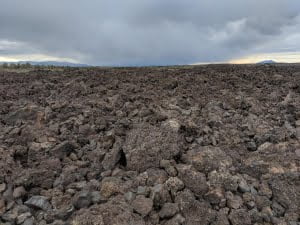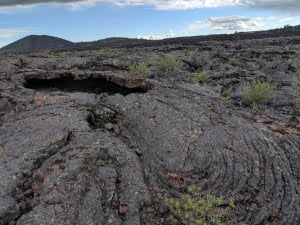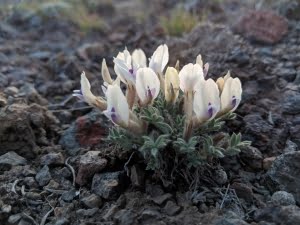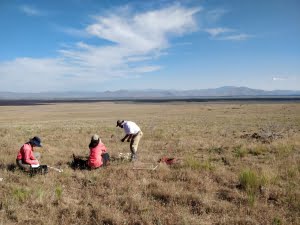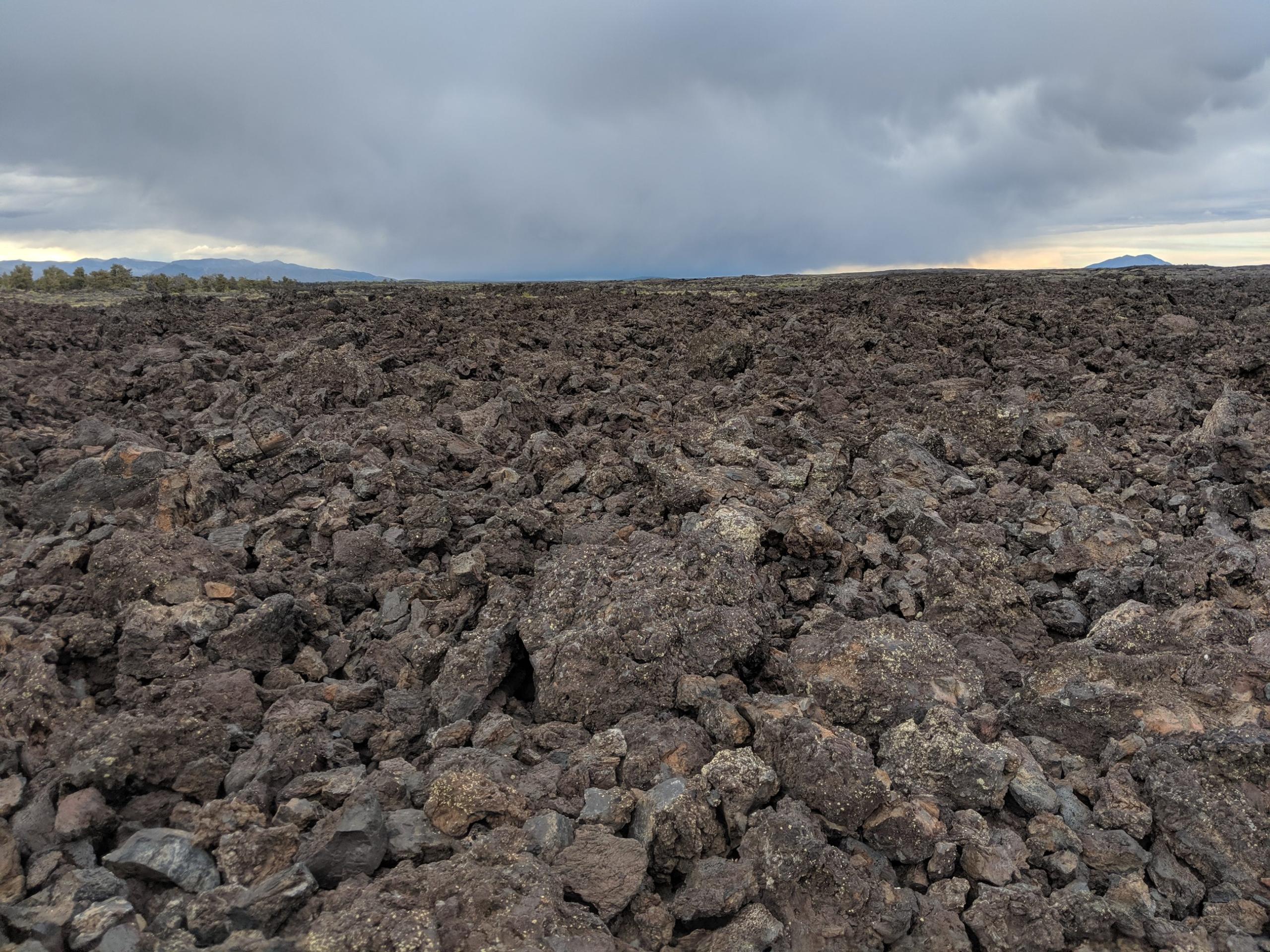
Finding hidden gems among a sea of lava rocks
I was born and raised in southern Idaho, and have a majority of my field experience in Sagebrush Steppe landscapes. It's beautiful country - an arid landscape that at a glance can look to be a monotonous shade of brown, but holds hidden gems for those willing to look close enough. Those hidden gems are the reason many of us pursued the fields of ecology, botany, wildlife biology, and conservation. This is why we are willing to put up with all of the unpredictability - including bad weather and difficult terrain.
These hidden gems were what my field partner, Ed Cope (a wonder-botanist from Illinois), and I were expecting to find at our field sites. Not being a west coast native, Ed was looking forward to quality Greater Sage-Grouse habitat, new and rare plant species, and surveying a diverse landscape. I was looking forward to returning to a landscape I call “home.” The place I grew up, honed my botany skills, and saw my first Sage-Grouse. However, the gems proved to be a bit more hidden than we expected, but at the end of the day, this beautiful and mysterious country did not fail to disappoint.
Our project areas within Craters of the Moon National Monument burned with anywhere from relatively light to moderate fire intensity in 2016. Native shrubs, forbs, and grasses were seeded post-fire for emergency stabilization and rehabilitation, and based on past rehabilitation successes, natural recovery without additional seeding treatments was the expected outcome. At many of our field sites, what we found predominantly was an invasive annual grass commonly called cheatgrass (Bromus tectorum). Invasive species and noxious weed expansion is a serious concern that transcends state boundaries and ecotypes. The effects of invasive, widespread exotics such as cheatgrass have been widely studied, with ongoing data collection and analysis in treatment areas, such as the native seeding treatment for our project. These species outcompete native species, causing a decline in biodiversity, and cheatgrass in particular can contribute to greater wildfire occurrence and intensity.
This season, we gained new appreciation for the struggles land managers have in combating native species, particularly cheatgrass. We strengthened our resolve and skills in collecting better data, finding solutions to problems posed by invasive species, and affecting change at all levels - even from the ground up. We gained much experience for future restoration and rehabilitation projects to create landscapes with an abundance of native species, and in finding exciting gems hidden found in a seemingly monotonous, brown landscape.
We are grateful to the Twin Falls District Bureau of Land Management (BLM) in Southern Idaho for initiating this project. For more information on our Internship Program, please visit our website.
Restoration
Research
Education
Get Involved
Contact
Main Office:
4950 SW Hout Street
Corvallis, OR 97333-9598
541-753-3099
info@appliedeco.org
Southwest Office:
1202 Parkway Dr. Suite B
Santa Fe, NM 87507
(505) 490-4910
swprogram@appliedeco.org
© 2025 Institute for Applied Ecology | Privacy Policy
